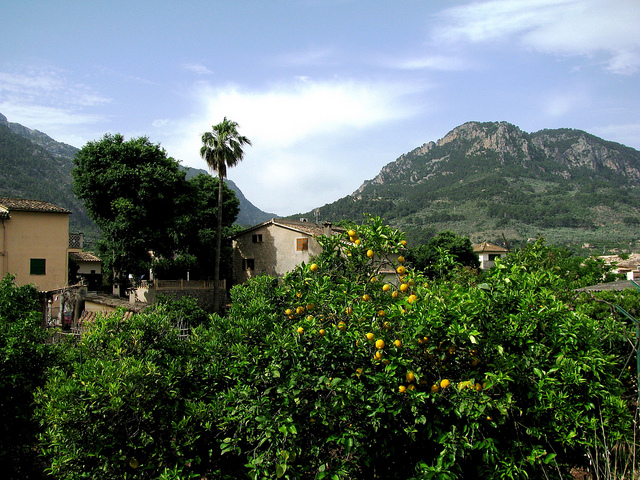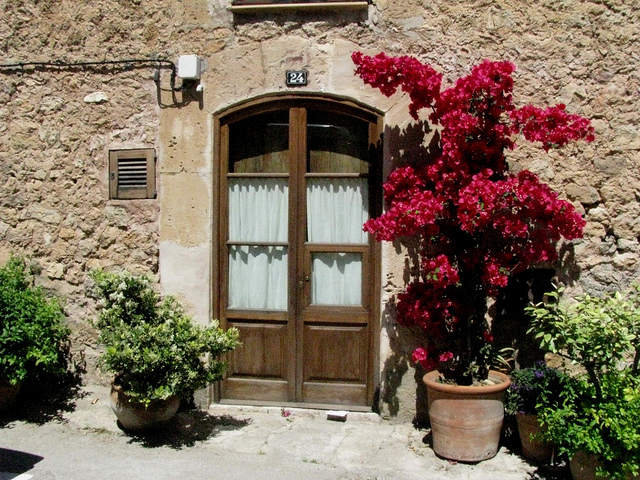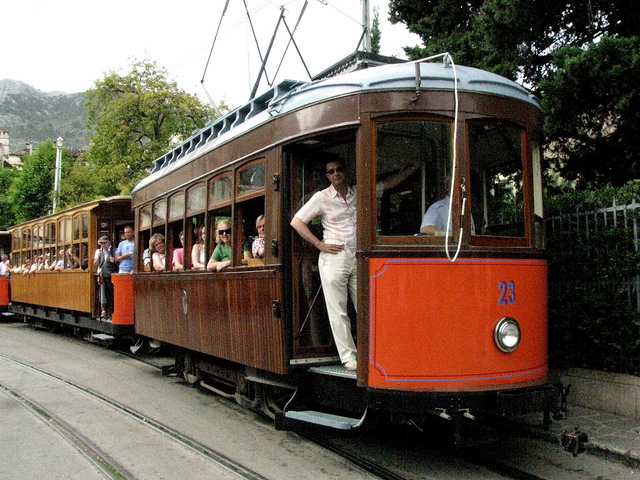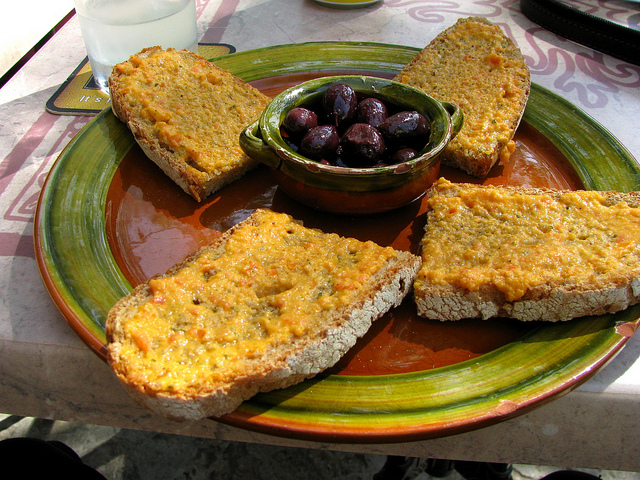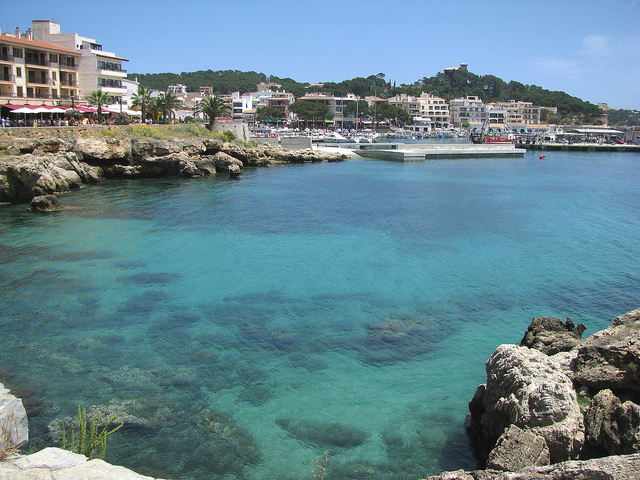Our second full day in Mallorca started with an early morning stroll along the Pine Walk promenade in Port de Pollença, a beautiful seafront town on the northeast side of the island. The expansive Bay of Pollença was shimmering in front of us in different hues of blue and green. Walking along the pine-fringed walkway beside attractive hotels and villas was a great way of enjoying the morning. After about an hour and a half we sat down at our hotel, the Hostal Goleta, and savoured our freshly baked baguettes for breakfast.

Morning view of the Bay de Pollença
Around 10 am we left Port de Pollença and started driving westwards and up into the Tramuntana mountain region. For me, the Tramuntana with its jagged limestone peaks, verdant valleys with pine trees, olive groves and almond trees, is the definite highlight of Mallorca’s landscapes. On the north side of the island the limestone peaks drop precipitously into the blue depths of the Mediterranean.

The Monastery of Lluc
We made our first stop at one of Mallorca’s primary tourist destinations: Santuari de Lluc, a monastery which has been the spiritual centre of the island for more than 800 years. Even today, the Monastery of Lluc is an important destination for pilgrims. The famous boys choir of the monastery, in existence for more than 500 years, is called Els Blavets (for their blue cassocks). It regularly draws large groups of spectators during its performances.

The church of the Monastery of Lluc
We arrived early enough before the big crowds rolled in. Only a few tour buses were parked in the parking lots and visitors continued to arrive. We entered the imposing monastery and arrived in a quiet courtyard that features a statue of the founder of the Sacred Heart Missionary Congregation. From here we crossed through another building into the courtyard that leads to the monastery’s church, which was built between 1622 and 1684 in the Renaissance-Baroque style. The main attraction of the church is the dark madonna, “La Moreneta de Lluc”, a dark-coloured statue of the Virgin Mary holding baby Jesus.

La Moreneta – the Black Madonna of Lluc
Next to the monastery is a hill which offers an excellent panorama over the monastery and the adjacent mountain valleys. I arrived at the top of the hill as the bells were tolling at 11 am and enjoyed the view of the serene mountain panorama. We walked past several groups of school children on our way out before we continued our drive on the winding roads of the Tramuntana Mountains.

View of the Monastery of Lluc from the adjacent mountain
Our next destination was Sa Calobra, a tiny village in a scenic cove on the north side of the island. The route down to Sa Calobra features a breathtaking panorama over the north coast of Mallorca and numerous switchbacks curves. The 12.5 km long road covers an altitude differential of 780 metres and is considered a masterwork of engineering, planned by the Italian engineer Antonio Paretti and completed in 1932. The “Nus de sa Corbata”, literally translated, the “knot in the tie”, features a 270 degree curve and a bridge.

Restaurant with beautiful stone arches inside the Monastery of Lluc
At the bottom of the road we were amazed at the amount of bus parking spaces. Several buses were already parked here, but we were wondering how busy this tiny hamlet could get during high season when the entire bus parking lot was full. Apparently on some days, upwards of 30,000 visitors descend on this village, and we counted ourselves lucky that we were here in May during pre-season.

A sightseeing boat is docked at Sa Calobra
Sa Calobra features a small beach that is flanked by several restaurants. Bus tourists were taking a walk through the village and populating the waterfront bars. We walked back to the car and enjoyed the breathtaking drive back up the mountain and onto the sideroad to Cala Tuent, a small gravel beach in the shadow of Mallorca’s highest mountain, the Puig Major. The contrast of Mallorca’s green pine trees, the blue jewel tones of the Mediterranean and the grey and brown-coloured coastal rocks delighted our eyes.

Little dog protecting his turf in Cala Tuent
Back up in the mountains we then passed two dams: the Embassament Gorg Blau and the Embassament de Cuber. Both water reservoirs are located in the highest part of the Tramuntana mountain range, and their light blue and turquoise waters stand out against the rugged mountain panorama.
The Embassament de Cuber or Cuber Lake is a place from where many hiking trails start in Mallorca. The Serra de Tramuntana in general is a fabulous destination for walking, hiking and biking. We were amazed at the large number of professional cyclists that populate the backroads of Mallorca’s mountains. The island obviously is a great training ground for cycling professionals.

So many choices for hiking next to the Embassament de Cuber
